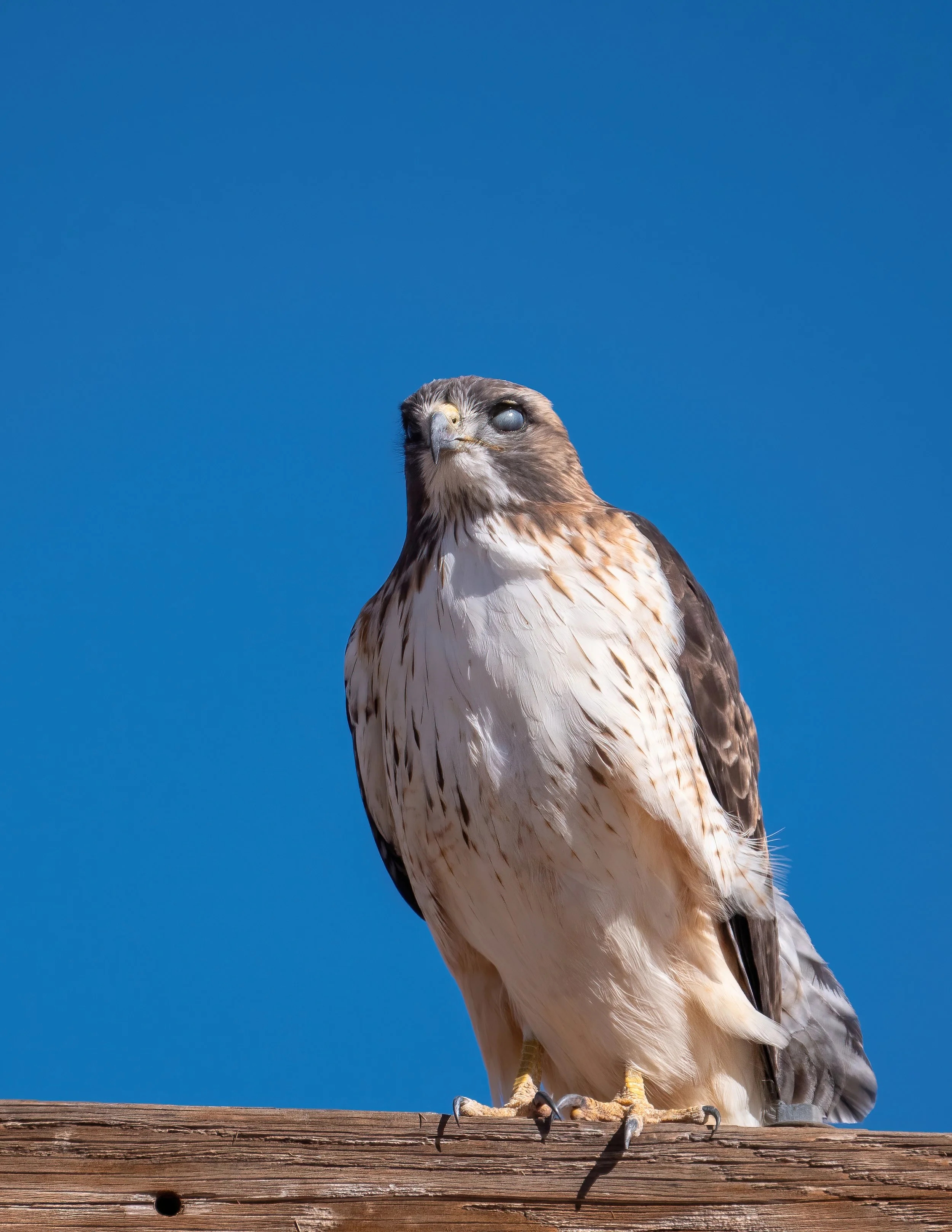Red-tailed Hawk : The Shomer
This is a Red-tailed Hawk. I saw him on my recent desert expedition. A common bird, he remains ever-so-worthy of slamming on the brakes at 80 mph and pulling off the road to receive his photo. Intellectually I know that he’s perched, surveying the landscape, hunting. I get it. But in the middle of that open expanse, endlessly open to the horizon, there is a sparsely traveled road. It’s a link between people; it’s a conduit to other opportunities. It’s connection. Now note his eye. Hawks are of course famously defined by their clear vision. That grey is his “second eyelid,” a protective membrane that disappears in an instant when he needs his full capacity of sight.
“Shomer” is a fascinating Hebrew word, so marvelously rich with layered meanings. “Shomer” can generally be translated as “guardian” or “watcher.” In Torah, in the Fourth Commandment, we are commanded to guard the Sabbath. Shomer. In Talmud, there are extensive rules for liability when someone is asked to serve as a bailee, someone who temporarily guards another’s property. Shomer. And when a person dies, his body is never left alone prior to burial. He is instead constantly guarded against any insult to his personal dignity. This mitzvah, irrecompensable and universal in kindness, is among our tradition’s highest honors. Shomer.
Each of us - daily - is invited to be a shomer. We are given the opportunity to watch over our families and members of our community. We are given the opportunity to guard them as they transit, creating new connections and linkages, often through uncharted areas. And we are given the opportunity to see clearly or to becloud our own vision when it is too painful or doesn’t align with our preferences or preconceptions. Shomer. These opportunities are challenges, difficult ones. And we should embrace them. Our shomrim are amongst the most meritorious of our community, rightly so. May this Hawk inspire you to guard, to watch over, and to see clearly.
